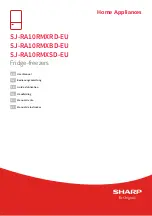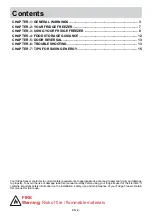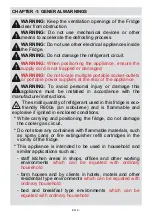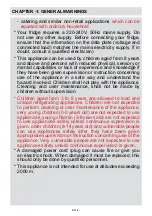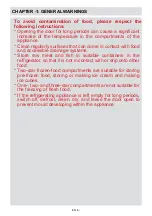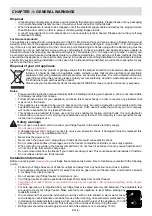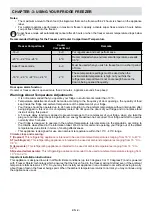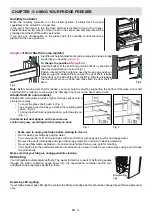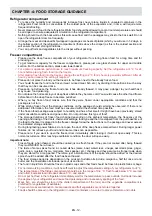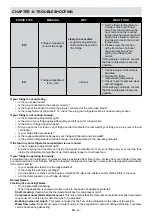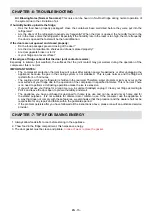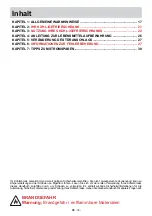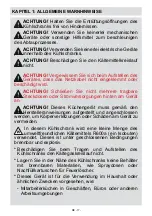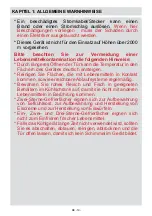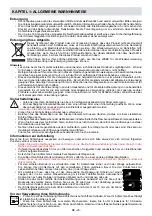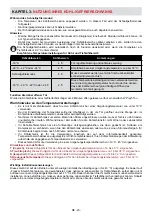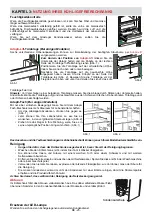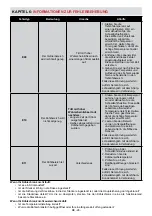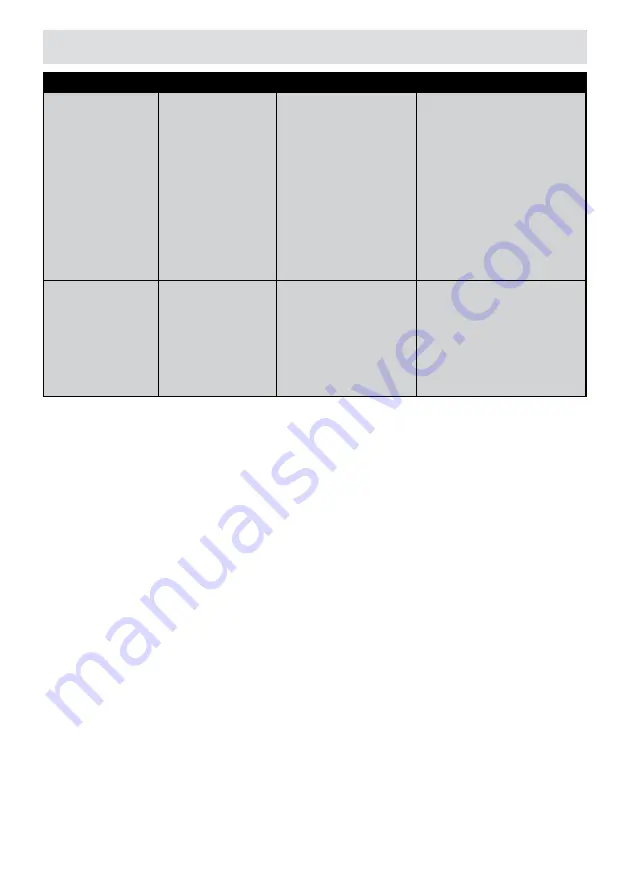
EN -14-
CHAPTER -6: TROUBLESHOOTING
If your fridge is not operating;
• Is there a power failure?
• Is the plug connected to the socket correctly?
• Is the fuse of the socket to which the plug is connected or the main fuse blown?
• Is there any failure at the socket? To check this, plug your refrigerator into a known working socket.
If your fridge is not cooling enough;
• Is the temperature adjustment right?
• Is the door of your fridge opened frequently and left open for a long while?
• Is the door of fridge closed properly?
• Did you put a dish or food on your fridge so that it contacts the rear wall of your fridge so as to prevent the air
circulation?
• Is your fridge filled excessively?
• Is there adequate distance between your fridge and the rear and side walls?
• Is the ambient temperature within the range of values specified in the operating manual?
If the food in your refrigerator compartment is over cooled
• Is the temperature adjustment right?
• Are there many food recently put inside the freezer compartment? If so, your fridge may over cool the food
inside the refrigerator compartment as it will operate longer to cool these food.
If your fridge is operating too loudly;
To maintain the set cooling level, compressor may be activated from time to time. Noises from your fridge at this time
are normal and due to its function. When the required cooling level is reached, noises will be decreased automatically.
If the noises persist;
• Is your appliance stable? Are the legs adjusted?
• Is there anything behind your fridge?
• Are the shelves or dishes on the shelves vibrating? Re-place the shelves and/or dishes if this is the case.
• Are the items placed on your fridge vibrating?
Normal Noises;
Cracking (Ice cracking) Noise:
• During automatic defrosting.
• When the appliance is cooled or warmed (due to expansion of appliance material).
Short cracking:
Heard when the thermostat switches the compressor on/off.
Compressor noise (Normal motor noise):
This noise means that the compressor operates normally Compressor
may cause more noise for a short time when it is activated.
Bubbling noise and splash:
This noise is caused by the flow of the refrigerant in the tubes of the system.
Water flow noise:
Normal flow noise of water flowing to the evaporation container during defrosting. This noise
can be heard during defrosting.
ERROR TYPE
MEANING
WHY
WHAT TO DO
E10
Fridge compartment
is not cold enough
Likely to occur after:
-
Long term power failure.
-
Hot food has been left in
the fridge.
1. Set the fridge temperature to
a colder value or set Super
Cool. This should remove the
error code once the required
temperature has been reached.
Keep doors closed to improve
time taken to reach the correct
temperature.
2. Please empty the location
at the front area of air duct
channel holes and avoid
putting food close to the
sensor.
If this warning continues, contact
the Sharp help desk as soon as
possible.
E11
Fridge compartment
is too cold
Various
1. Check is Super Cool mode is
activated
2. Reduce the fridge
compartment temperature
3. Check to see if vents are clear
and not clogged
If this warning continues, contact
the Sharp help desk as soon as
possible.

